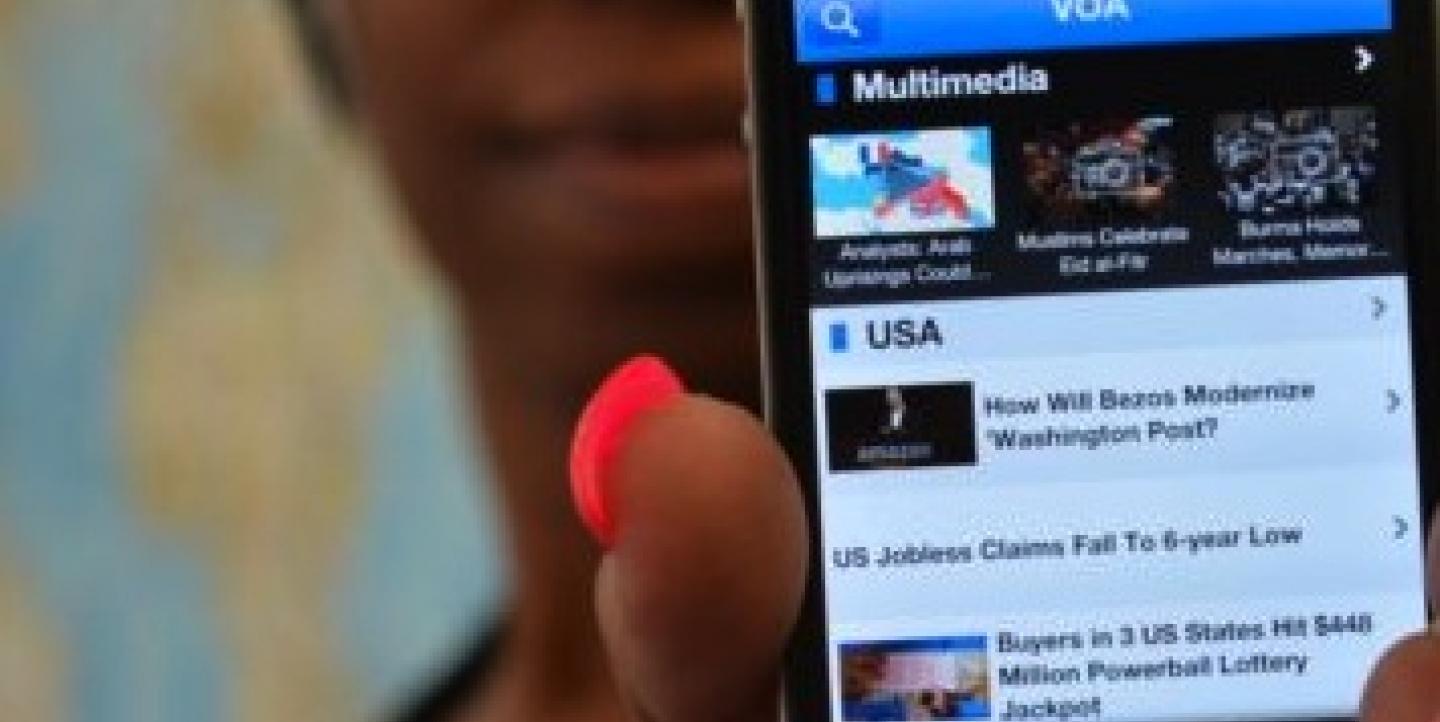Updated: March 31, 2014, 10:45 a.m. EDT.
When Will Sullivan joined the Broadcasting Board of Governors (BBG) with the mission of creating its first organization-wide mobile app, he faced a daunting task.
The BBG, an independent U.S. federal agency, supervises five international broadcasting organizations, including Voice of America (VOA), which reaches 164 million people weekly in 45 languages.
Reaching so many people in so many countries meant that its mobile app would have to serve extremely diverse audiences that varied in culture, language and technology capacity.
But this was only part of the challenge. Sullivan, the BBG’s director for mobile, wanted to actively integrate the audience into the news process and tap into a potential network of citizen journalists spread all over the world. For that to work, the process of submitting news content had to be extremely easy, and so one of the app’s strongest capabilities is a streamlined User Generated Content (UGC) feature that feeds directly into the newsroom's Content Management System (CMS).
“Producers in country can get audio, video, text, photos. They can take all of it and it feeds straight into our CMS into an approval queue so we can publish it almost instantly,” Sullivan told IJNet.
When users send a piece of content, the app alerts them that their submission is being sent to an editor. The editor on the other end gets an email notification that a new piece of content is in a queue in the CMS. (The BBG uses Pangea, its own custom-built CMS.) After vetting it and editing it if needed, the editors publish the contribution, which can potentially be translated into other languages.
While some news outlets have one mobile app for reporting news and another for user contributions (think CNN’s iReport), Sullivan knew that getting someone to install a separate application can be a barrier to adoption, and wanted the UCG component in the main news app. The feature has also been added to other institutional apps under the BBG, like Alhurra, Marti Noticias and Radio Free Europe.
The BBG is “lighting up a potential network of 200 million stringers around the world (the BBG’s total estimated audience) by installing this app,” Sullivan said.
The app is laying the foundation for the entire organization to adopt UGC, and the BBG is building best practices and training staff to unleash the potential of mobile.
All of this comes at a time when the media are still trying to figure out how to do mobile and do it right (Circa is one of the few players excelling at it), while the mobile revolution keeps marching on: the United Nations’ telecommunications agency recently announced that cellphone subscriptions rose to 6.8 billion, and the adoption of mobile is growing exponentially in developing countries, where many users are skipping the personal desktop experience altogether.
“A lot of our markets are mobile-only, so this [app] is a great channel,” Sullivan said. “We’ve had websites forever but it’s never really been an option for a lot of the users there, since they’d have to get the point-and-shoot camera, plug it into a desktop computer, or go to an Internet café and download the photos and send them,” he said.
iOS and Android users have downloaded the app more than 300,000 times. When it launched in August, it was ranked 10th in the news app category for China, number one in Cambodia for all devices and among the top 50 for Africa. The app has also been named a finalist for the prestigious GSMA's 2014 Global Mobile Awards in the category "Best Mobile Publishing Product or Service."
The challenges of getting content out where the Internet is censored
Sullivan learned early on how important security issues are to the VOA’s audience.
Before he came on board, a few language services already had their own basic apps, like the Persian news network's app, which pulled RSS feed headlines and experienced frequent crashes.
Though an app that crashes is usually just an annoyance, in Iran it can mean much more. The Iranian government can persecute people who access certain websites, and opening an app that suddenly crashes can mean the government is watching.
“We were getting messages from users that thought they were getting tapped," Sullivan said. “It was kind of a rude awakening, but it also made me very passionate about this job and what we’re doing.”
The VOA built security features into the app from the beginning. The Android version offers the option of connecting through a proxy server, so people in countries that censor the Internet, like China and Syria, can access the content, he said.
The free app is available in more languages (43) than any other news app. This required overcoming a lot of technical challenges, since fonts for some of the languages are not supported on some handheld devices and operating systems, Sullivan said.
“Arabic wasn’t supported on Android devices until the 4.0 version, and it’s not even completely supported,” he said. “We built these applications that support fonts that aren’t natively supported by the operating system, which is very challenging to do and takes a lot of testing.”
The app also lets users switch on a low-bandwidth version. It removes all of the images and some of the text, so users in regions lacking fast or affordable mobile Internet can check just the headlines.
Image credit: courtesy of VOA.
Maite Fernández is IJNet’s managing editor. She is bilingual in English and Spanish and has an M.J. in multimedia journalism from the University of Maryland.

